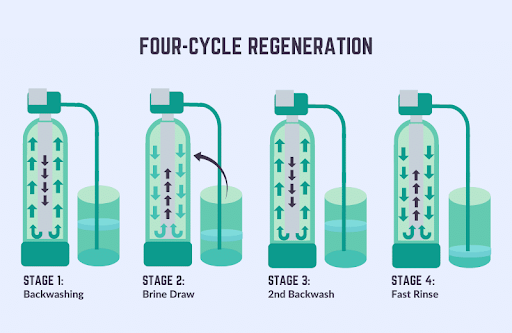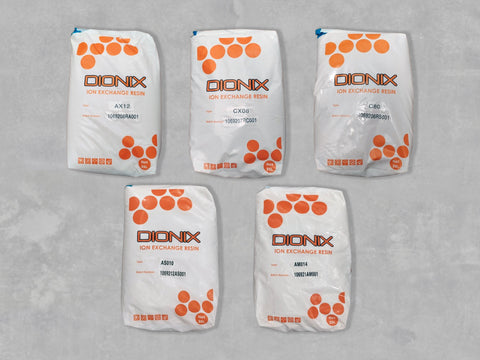How to Choose the Right Water Filter for Your Household Needs

Clean water is a basic need that is very important for every household. However, the quality of water available does not always meet the desired standards. That's why choosing the right water filter is a crucial step to ensure your family gets safe and healthy water for consumption. In this article, we will take an in-depth look at the various aspects of selecting a household water filter that suits your needs.
Introduction
Water is the source of life, and its quality greatly affects our daily health. Although water provided by the government or drinking water companies is generally treated, there are often contaminants that remain or are even re-contaminated during its journey to our homes. This is why household water filters are becoming an increasingly popular solution.
Water filters are not only used to improve the taste and odor of water, but also to remove harmful contaminants such as bacteria, viruses, heavy metals, and other chemicals. However, with so many water filter options available in the market, choosing the right one can be a confusing task.
Before we dive into the types of water filters and how to choose one, it is important to understand that there is no "one-size-fits-all" solution when it comes to water filtration. Every household has different needs, depending on the water source, local water quality, and personal preferences. Therefore, the first step in choosing the right water filter is to evaluate your specific needs.
In this article, we will discuss the various factors to consider when choosing a water filter, from the type of contaminants you want to remove, to the capacity required, to long-term maintenance costs. We'll also look at the latest filtration technologies and how they can provide a more effective solution to household clean water needs.
In addition, we will discuss the importance of understanding your local water quality reports and how this information can help you make a better decision in choosing a water filter.
With a better understanding of water filters and the specific needs of your household, you will be able to make a more informed decision and choose a filtration system that is not only effective but also fits your lifestyle and budget. Let's start the journey towards cleaner and healthier drinking water for your family.
Understanding the Types of Water Filters
Before choosing the right water filter, it is important to understand the different types of filters available in the market. Each type of filter has its own advantages and disadvantages, as well as different effectiveness in removing certain contaminants.
1. Sediment Filters
Sediment filters are the most basic type of filter designed to remove large particles such as sand, silt, and rust. These filters are typically used as the initial stage in a multi-stage filtration system. The Pentair Pentek cartridge filter is an example of an effective product for sediment filtration.
2. Activated Carbon Filters
Activated carbon filters are very effective in removing chlorine, odors, bad tastes, and some organic contaminants. These filters work through a process of adsorption, where contaminants stick to the surface of the carbon. Calgon coal-based activated carbon is a good choice for carbon filtration.
3. Reverse Osmosis (RO)
Reverse Osmosis systems use semi-permeable membranes to remove a variety of contaminants, including heavy metals, dissolved salts, and microorganisms. RO systems are very effective but also require more maintenance. The DuPont FilmTec RO membrane is one of the leading products in this category.
4. Ultraviolet (UV) Disinfection
UV systems use ultraviolet light to kill microorganisms such as bacteria and viruses. While effective for disinfection, these systems do not remove physical or chemical contaminants. The Hydropro UV system is an example of a product that can be considered for water disinfection.
5. Ion Exchange
Ion exchange filters are primarily used to soften water by replacing calcium and magnesium ions with sodium ions. This is especially useful in areas with hard water. Purolite ion exchange machine, dionix and trilite are good choices for water softening systems.
Factors to Consider
After understanding the types of filters available, there are a few key factors to consider when choosing the right water filter for your home:
1. Source Water Quality
The first step is to know the quality of the water you have. Take a water test to find out the specific contaminants present in your water. This will help you choose the most effective filter for your needs.
2. Filtration Capacity
Consider how much water you use daily and choose a filter with the appropriate capacity. Filters with too small a capacity may be inefficient, while those that are too large can be wasteful.
3. Flow Rate
The flow rate determines how fast the water can be filtered. This is important especially if you need a large amount of clean water quickly.
4. Maintenance Cost
In addition to the initial cost, also consider the long-term maintenance costs, including filter replacement and energy consumption. Some systems, such as RO, may require more frequent maintenance.
5. Available Space
Consider the space you have available to install the filter system. Some systems, such as RO, require a sizable space, while simple filters may only require a small amount of space under the sink.
6. Special Needs
If you have special needs, such as removing certain contaminants or increasing the pH of the water, make sure the filter you choose can meet those needs.
Latest Filtration Technology
Technological developments continue to bring innovation in the world of water filtration. Some of the latest technologies worth considering include:
1. Nanofiltration
This technology uses membranes with very small pores to remove contaminants at the molecular level. Nanofiltration is effective in removing multivalent ions and some organic contaminants.
2. Graphene-based Filters
Graphene-based filters offer high efficiency in removing contaminants with lower energy consumption compared to conventional technologies.
3. Smart Filters
Smart filters are equipped with sensors that can monitor water quality in real-time and provide notifications when filters need to be replaced or the system requires maintenance.
Understanding the Water Quality Report
Before choosing a water filter, it is very important to understand the water quality in your area. Annual water quality reports from local water providers can provide valuable information about contaminants that may be present in your water. Some things to note in this report include:
- Chlorine level
- Water hardness
- The presence of heavy metals such as lead or copper
- Nitrate and nitrite levels
- Presence of pathogenic microorganisms
By understanding this report, you can be more precise in choosing a filter that suits your specific needs.
Environmental Impact and Eco-friendly Choices
When choosing a water filter, it is also important to consider the environmental impact. Some filtration systems, especially RO, can produce a lot of wastewater. Consider more environmentally friendly options like:
- Filters that can be refilled or recycled
- Systems with higher water efficiency
- Filters with a longer lifespan
The DuPont Omexell ultrafiltration membrane is an example of a product that offers high efficiency with lower environmental impact.
Conclusion
Choosing the right water filter for your household needs is an important decision that requires careful consideration. By understanding the types of filters available, the factors to consider, and the latest technology, you can make a more informed choice.
Remember that there is no "one-size-fits-all" solution in water filtration. Every household's needs are different, and it's important to choose a system that suits your local water quality, consumption needs, and personal preferences.
Invest in a water filtration system, you can make a more informed choice.
Investing in the right water filtration system will not only improve the quality of your drinking water, but it can also positively impact the long-term health of your family. With cleaner, healthier water, you can enjoy peace of mind knowing that you've taken an important step toward protecting your family's health.
Don't hesitate to consult a professional for advice.
Don't hesitate to consult a professional or conduct further research before making a final decision. With a careful and informed approach, you can find the ideal water filtration solution for your home, ensuring a clean and healthy water supply for years to come.
Questions and Answers
1. Is a household water filter really necessary if the tap water is already treated?
Yes, household water filters are still needed even if tap water is treated. Although tap water has gone through a treatment process, there is still the possibility of contamination during the water's journey from the treatment facility to your home. Old or damaged distribution pipes can cause contaminants to enter. In addition, some people may be sensitive to the chlorine used in tap water treatment. Household water filters can provide an additional layer of protection and improve the overall taste and quality of the water.
2. How long does it generally take for a water filter to be replaced?
The frequency of water filter replacement varies depending on the type of filter and the quality of water being filtered. In general: - Sediment filters: 3-6 months - Activated carbon filters: 6-12 months - RO membrane: 2-3 years - UV lamp: 12 months However, it is important to check the manufacturer's recommendations and monitor the performance of your filter. If you notice a drop in water quality or a decrease in flow rate, it may be time to replace the filter early.
3. Do Reverse Osmosis (RO) systems remove essential minerals from water?
Yes, Reverse Osmosis systems do remove most minerals from water, including some beneficial minerals like calcium and magnesium. However, this is not always a problem as most of our mineral intake comes from food, not water. Some modern RO systems come with a remineralization stage that adds important minerals back into the filtered water. If you are concerned about this, you could consider an RO system with a remineralization feature or consult a nutritionist about your mineral needs.
References
1. Byrne, W. "Reverse osmosis a practical guide for industrial users." (Z-Library), page 151: "Filter maintenance: Filters should be changed regularly, at least every 2 months, to reduce bacteria growth and control differential pressure. Cellulose-based filters should be avoided in RO systems."
2. Byrne, W. "Reverse osmosis a practical guide for industrial users." (Z-Library), page 171: "Reverse osmosis can remove ionic contaminants and particulate matter that are much smaller than 0.1 μm, allowing RO to remove key contaminants in high-purity DI water systems."
3. Binnie, C. & Kimber, M. "Basic Water Treatment (5th Edition)." (Z-Library), page 15: "Absolutely pure water is never found in nature and it is increasingly rare to encounter a source of water that requires no treatment before being used for potable-water supply. Water contains both biological and inorganic matter."
4. Spellman, F.R. "Handbook of water and wastewater treatment plant operations." (Z-Library), page 652: "The effectiveness of disinfection is measured by testing for the presence or absence of coliform bacteria, which are generally not pathogenic but indicate the possibility of contamination."
5. Binnie, C. & Kimber, M. "Basic Water Treatment (5th Edition)." (Z-Library), page 229: "The main concerns with private water supplies are ensuring the water is microbiologically safe, managing inorganic contaminants such as nitrate and radionuclides, and addressing aesthetic parameters such as color, turbidity, taste and odor."

.png?width=50&height=50&name=Logo_Watermart_Perkasa-removebg-preview%20(1).png)


